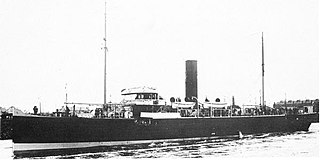
Q-ships, also known as Q-boats, decoy vessels, special service ships, or mystery ships, were heavily armed merchant ships with concealed weaponry, designed to lure submarines into making surface attacks. This gave Q-ships the chance to open fire and sink them. The use of Q-ships contributed to the abandonment of cruiser rules restricting attacks on unarmed merchant ships and to the shift to unrestricted submarine warfare in the 20th century.

HMS A3 was an A-class submarine built for the Royal Navy in the first decade of the 20th century. She sank in 1912. The wreck is a Protected Wreck managed by Historic England.

HMS Grampus (S04) was a Porpoise-class submarine. Her keel was laid down in 1955 by Cammell Laird at Birkenhead. She was launched by Lady Shepheard on 30 May 1957. She was first commissioned on 19 December 1958.

HMS Seahorse was a first-batch S-class submarine built for the Royal Navy during the 1930s. Ordered in March 1931, she was laid down at Chatham Dockyard in September 1931 and launched on 15 November 1932.
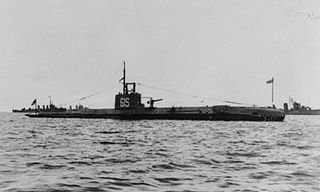
HMS Swordfish (61S) was a first-batch S-class submarine built for the Royal Navy during the 1930s. Commissioned in 1932, she was given the pennant number 61S and was assigned to the 2nd Submarine Flotilla.

HMS Salmon was a second-batch S-class submarine built during the 1930s for the Royal Navy. Completed in 1935, the boat fought in the Second World War. Salmon is one of twelve boats named in the song "Twelve Little S-Boats".

HMS Narwhal (S03) was a Porpoise-class submarine of the Royal Navy. She was launched on 25 October 1957.
HMS D6 was one of eight D-class submarine built for the Royal Navy during the first decade of the 20th century.

HMS Sturgeon was an S-class submarine that entered service with the Royal Navy in 1932. Ordered in 1930, she was laid down at Chatham Dockyard in January 1931 and launched on 8 January 1932. Commissioned on 27 February 1933, Sturgeon was assigned to the 2nd Submarine Flotilla.
HMS C27 was one of 38 C-class submarines built for the Royal Navy in the first decade of the 20th century.
HMS C29 was one of 38 C-class submarines built for the Royal Navy in the first decade of the 20th century. C29 served in the First World War until she was sunk by mine on 29 August 1915.
HMS C33 was one of 38 C-class submarines built for the Royal Navy in the first decade of the 20th century. The boat sank with all hands on 4 August 1915 after hitting a mine.

HMS Sterlet was a second-batch S-class submarine built during the 1930s for the Royal Navy. Completed in 1938, the boat fought in the Second World War. The submarine is one of the 12 boats named in the song Twelve Little S-Boats. Thus far she has been the only ship of the Royal Navy to be named Sterlet.
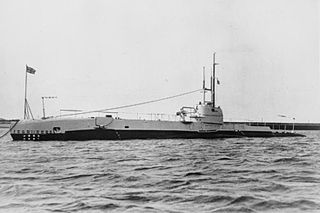
HMS Snapper was a second-batch S-class submarine built during the 1930s for the Royal Navy. Completed in 1935, the boat participated in the Second World War. Snapper is one of the 12 boats named in the song "Twelve Little S-Boats".
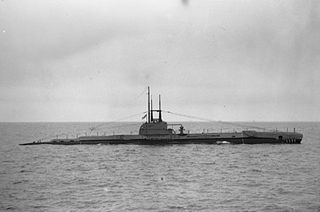
HMS Seawolf was a second-batch S-class submarine built during the 1930s for the Royal Navy. Completed in 1936, the boat fought in the Second World War.
HMS Porpoise (N14) was one of the six-ship class of Grampus-class mine-laying submarines of the Royal Navy. She was built at Vickers Armstrong, Barrow and launched 30 August 1932. She served in World War II in most of the naval theatres of the war, in home waters, the Mediterranean and the Far East. She was sunk with all hands by Japanese aircraft on 19 January 1945, and was the last Royal Navy submarine to be lost to enemy action.
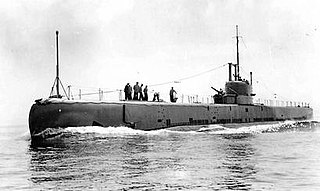
HMS Narwhal (N45) was one of the six ship class of Grampus-class mine-laying submarine of the Royal Navy. She was built by Vickers Armstrong, Barrow and launched 29 August 1935. She served in the Second World War in home waters. She was lost in the North Sea on 23 July 1940, probably sunk by German aircraft.
Eleven ships of the Royal Navy have borne the name HMS Porpoise, after the marine mammal, the porpoise:

HMS B10 was one of eleven B-class submarines built for the Royal Navy in the first decade of the 20th century. Completed in 1906, she was initially assigned to the Home Fleet, before the boat was transferred to the Mediterranean six years later. After the First World War began in 1914, B10 played a minor role in the Dardanelles Campaign. The boat was transferred to the Adriatic Sea in 1916 to support Italian forces against the Austro-Hungarian Navy. She was anchored in Venice when it was bombed by Austro-Hungarian aircraft on 9 August; B10 was sunk by one of their bombs and became the first submarine to be sunk by an aircraft in history. Salvaged by the Italians, she caught fire while under repair and became a constructive total loss. Her hulk was subsequently sold for scrap.














